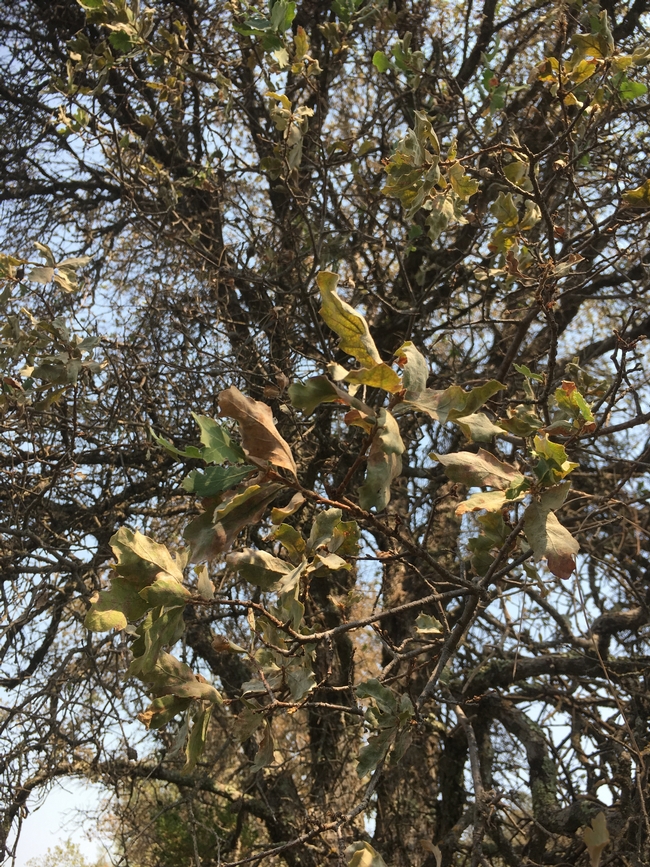I suspect the last five or six years have been difficult on our native oaks in the Sierra foothills. During the drought, many of the blue oaks I see regularly between Auburn and Lincoln leafed out during the unusual warm spells we seemed to have in late January and early February. After especially hot and dry summers, many of them dropped their leaves early. Finally, in 2017, our drought broke - in a big way! We measured over 61 inches of rain in Auburn - more than twice our annual average. And yet our blue oaks are still looking stressed. In late spring and early summer, many of them had a powdery cast to their leaves. Now, in early September, many of them seem to be turning color and dropping leaves - at least a month and a half earlier than normal. Since I'm not an oak expert, I turned to my friend Doug McCreary, natural resource specialist emeritus with the University of California.
Doug confirmed that the blue oaks were impacted by powdery mildew early in the season - thanks to our wet April. The wet spring also caused a fungal disease called anthracnose, which is likely the cause of the early leaf loss we're seeing now. Anthracnose can also infect valley oaks and black oaks - indeed, infected black oaks can experience extensive defoliation early in summer (which I've noticed during my visits to higher elevations in the foothills).
Fortunately, the effects of this fungal infection are typically not long-lasting. Since the weather conditions (that is, a wet spring) that favor anthracnose infection are reasonably rare, it's unlikely that our oaks will suffer any long-term effects.
Click here for a great article about a similar outbreak in the 1990s!
